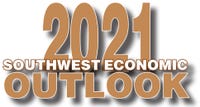

The Covid pandemic has had differing effects on various markets across the U.S. and sheep and goats are no different. Two of the biggest markets for lamb are restaurants and the Easter holiday. Covid had a negative impact on both. After starting out above 2019 prices, 2020 prices were trending above the five-year average and seemed to be growing stronger until March. Prices for feeder lambs (60-90 lbs.) in a three-market average (Colorado, Texas, and South Dakota) saw a 35.2% decline from March into April bringing prices down to an annual low on $1.57/lbs. Prices remained low throughout the summer months until October when prices climbed to $2.52/lbs. These recent spikes have the 2020 average price to $1.91/lbs., which is right on the five-year average price.
Lamb imports for January through September 2020 equaled 15.6 million pounds, down 7.2% from 2019. U.S. lamb production from January to October 2020 equaled 27 million pounds, down 7.6% from 2019. Also, there has been a sharp decrease in lamb and mutton cold storage. Storage values are down to 25.7 million pounds, the lowest storage value since February 2017.
2020 saw the closing of one sheep processing plant and the opening of another. The Colorado Lamb processing plant hopes to process 1,000 — 1,200 sheep per day with a goal of reaching 1,800 per day. The ability to keep inventories current and not allowing cold storage numbers to build will help keep lamb prices good in 2021. Prices should average around $1.80 during the first half of the year, increasing close to $1.90 by the fall.
Goat markets have not seemed to have any negative effect caused by Covid. Meat goat numbers increased to 2.09 million head, a 1.7% increase in 2020. Prices started strong in 2020. 40–60-pound goats averaged over $3.10/lbs. through July reaching their peak at $3.27 in April. Prices started to decline in late summer, falling to an annual low price of $2.93 in September but rallied back to over $3 since then. As of the end of October, the annual average price has been $3.11/lbs., which is $0.32 over 2019, and a record for U.S. goat prices. The story is similar for 60-80 lbs. goats as they have average $3.04/lbs. in 2020, which is $0.35 above 2019 and a record price as well.
Meat goat imports in 2019 totaled 17.9 metric tons, which was up 18.4% over 2018 and the fourth-highest amount in the last 10 years. In contrast, for January through September 2020 meat goat imports have totaled 7,646 metric tons, which is down 41.7% for the same period in 2019 and is on pace to be one of the lowest totals since 2007.
Each year goat prices continue to average better than the year before. Going into 2021 averaging over $3 should help keep prices high throughout the spring market. If the market is overpriced, the summer decrease could be larger than normal so producers should be prepared to market their goats before the slump occurs.
See, The economy is at a crisis point–no joke
Source: is Oklahoma State University and Texas A&M University, which is solely responsible for the information provided and is wholly owned by the source. Informa Business Media and all its subsidiaries are not responsible for any of the content contained in this information asset.
About the Author(s)
You May Also Like




